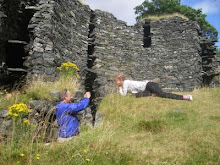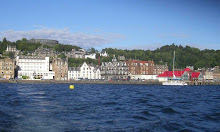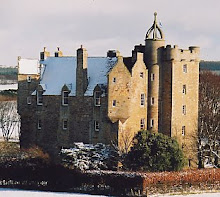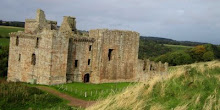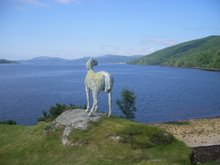 We were approaching Forres, and I broke off to talk about the tower above the town. 'Nelson's Tower' was erected in 1806 by prominent members of the community of Forres as a memorial to the naval hero.
We were approaching Forres, and I broke off to talk about the tower above the town. 'Nelson's Tower' was erected in 1806 by prominent members of the community of Forres as a memorial to the naval hero.But why?
After all, Forres has no naval tradition, Admiral Nelson lived in Norfolk and never visited Scotland.
The answer is that Nelson was a British (not a Scottish) hero and in 1806, prominent members of this Highland town wanted to be associated with Britain. They were impatient to move on, leaving behind all the embarrassing, historical Highland baggage of clan feuds, cattle stealing, and Jacobite Risings. Just five years previously the Earl of Moray had knocked down nearby Darnaway Castle, replacing it with a mansion house - a building better suited to the time.
In 1807 some subscribers to the cost of the monument went on to form a Trafalgar dining club. It met annually on 21st October. James Brodie of Brodie took the chair at the inaugural meeting. And as they passed around the snuff (in a box modelled on Nelson's death mask) and used the spittoon (a chamber pot decorated with the bust of Napoleon), when they stood and raised their glasses to drink the the good health of King George, they no doubt felt extremely proud to be British.
After all, this was the exciting, new, industrial, 19th century!
In Edinburgh the 'Scottish Enlightenment' was in full swing - an intellectual movement led by those who, ironically, considered themselves 'North British' and went to some lengths to speak English and not Scots! The North British Fusiliers were already defending these islands against Bonaparte; the North British Railway was born in 1844, as was the North British Advertiser, the North British Distillery followed in 1885, and I can remember when the Edinburgh hotel now known as The Balmoral was still known as the 'North British'.
In the 19th century, 'North Britain' was the spirit of the age.
Something's changed then!
...














































